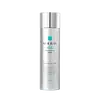What's inside
What's inside
 Key Ingredients
Key Ingredients

 Benefits
Benefits

 Concerns
Concerns

No concerns
 Ingredients Side-by-side
Ingredients Side-by-side

Water
Skin ConditioningDipropylene Glycol
HumectantGlycerin
HumectantNiacinamide
Smoothing1,2-Hexanediol
Skin ConditioningC12-14 Alketh-12
EmulsifyingErythritol
HumectantXylitol
HumectantButylene Glycol
HumectantSodium Dna
Skin ConditioningAcrylates/C10-30 Alkyl Acrylate Crosspolymer
Emulsion StabilisingAdenosine
Skin ConditioningTromethamine
BufferingXanthan Gum
EmulsifyingPolyquaternium-51
Skin ConditioningPyrus Communis Fruit Extract
Skin ConditioningNymphaea Alba Flower Extract
Skin ConditioningBackhousia Citriodora Leaf Extract
AstringentPyrus Malus Fruit Extract
Skin ConditioningRosa Damascena Flower Water
MaskingSea Water
HumectantDextrin
AbsorbentIris Florentina Root Extract
MaskingCucumis Melo Fruit Extract
Skin ConditioningPinus Pinaster Bark Extract
AntioxidantGardenia Taitensis Callus Extract
AntioxidantCentella Asiatica Leaf Extract
Skin ConditioningBifida Ferment Lysate
Skin ConditioningLactococcus Ferment Lysate
Skin ConditioningLactobacillus Ferment Lysate
Skin ConditioningTocopherol
AntioxidantHydrogenated Lecithin
EmulsifyingHydrolyzed Collagen
EmollientHyaluronic Acid
HumectantPanthenol
Skin ConditioningAsiaticoside
AntioxidantAsiatic Acid
Skin ConditioningMadecassic Acid
Skin ConditioningBeta-Glucan
Skin ConditioningCeramide NP
Skin ConditioningDisodium EDTA
Ethylhexylglycerin
Skin ConditioningWater, Dipropylene Glycol, Glycerin, Niacinamide, 1,2-Hexanediol, C12-14 Alketh-12, Erythritol, Xylitol, Butylene Glycol, Sodium Dna, Acrylates/C10-30 Alkyl Acrylate Crosspolymer, Adenosine, Tromethamine, Xanthan Gum, Polyquaternium-51, Pyrus Communis Fruit Extract, Nymphaea Alba Flower Extract, Backhousia Citriodora Leaf Extract, Pyrus Malus Fruit Extract, Rosa Damascena Flower Water, Sea Water, Dextrin, Iris Florentina Root Extract, Cucumis Melo Fruit Extract, Pinus Pinaster Bark Extract, Gardenia Taitensis Callus Extract, Centella Asiatica Leaf Extract, Bifida Ferment Lysate, Lactococcus Ferment Lysate, Lactobacillus Ferment Lysate, Tocopherol, Hydrogenated Lecithin, Hydrolyzed Collagen, Hyaluronic Acid, Panthenol, Asiaticoside, Asiatic Acid, Madecassic Acid, Beta-Glucan, Ceramide NP, Disodium EDTA, Ethylhexylglycerin
Hydrolyzed Dna
Skin ConditioningMelaleuca Alternifolia Leaf Extract
PerfumingBiosaccharide Gum-4
Skin ConditioningWater
Skin ConditioningPropanediol
SolventLocked Nucleic Acid-1
Skin ConditioningPortulaca Oleracea Extract
Skin ConditioningTrehalose
HumectantCentella Asiatica Extract
CleansingFicus Carica Fruit Extract
HumectantPyrus Malus Flower Extract
Skin ConditioningHydrogenated Lecithin
EmulsifyingBetaine
HumectantC12-14 Pareth-12
EmulsifyingSodium Citrate
BufferingCitric Acid
BufferingDisodium EDTA
Gluconolactone
Skin ConditioningCeramide NP
Skin ConditioningParfum
MaskingEthylhexylglycerin
Skin ConditioningButylphenyl Methylpropional
PerfumingLinalool
PerfumingAlpha-Isomethyl Ionone
PerfumingLimonene
PerfumingHydrolyzed Dna, Melaleuca Alternifolia Leaf Extract, Biosaccharide Gum-4, Water, Propanediol, Locked Nucleic Acid-1, Portulaca Oleracea Extract, Trehalose, Centella Asiatica Extract, Ficus Carica Fruit Extract, Pyrus Malus Flower Extract, Hydrogenated Lecithin, Betaine, C12-14 Pareth-12, Sodium Citrate, Citric Acid, Disodium EDTA, Gluconolactone, Ceramide NP, Parfum, Ethylhexylglycerin, Butylphenyl Methylpropional, Linalool, Alpha-Isomethyl Ionone, Limonene
Ingredients Explained
These ingredients are found in both products.
Ingredients higher up in an ingredient list are typically present in a larger amount.
Ceramide NP is a type of ceramide and formally known as ceramide 3.
Ceramides are intercellular lipids naturally found in our skin that bonds dead skin cells together to create a barrier. They are known for their ability to hold water and thus are a great ingredient for dry skin.
Ceramides are an important building block for our skin barrier. A stronger barrier helps the skin look more firm and hydrated. By bolstering the skin ceramides act as a barrier against irritating ingredients. This can help with inflammation as well.
If you would like to eat ceramides, sweet potatoes contain a small amount.
Read more about other common types of ceramides here:
Ceramide AP
Ceramide EOP
Disodium EDTA plays a role in making products more stable by aiding other preservatives.
It is a chelating agent, meaning it neutralizes metal ions that may be found in a product.
Disodium EDTA is a salt of edetic acid and is found to be safe in cosmetic ingredients.
Learn more about Disodium EDTAEthylhexylglycerin (we can't pronounce this either) is commonly used as a preservative and skin softener. It is derived from glyceryl.
You might see Ethylhexylglycerin often paired with other preservatives such as phenoxyethanol. Ethylhexylglycerin has been found to increase the effectiveness of these other preservatives.
Hydrogenated Lecithin is created from the hydrogenation of lecithin (a group of phospholipids). Hydrogenation is a chemical reaction between hydrogen and another element.
This ingredient is an emollient and emulsifier. As an emollient, it helps soften skin by trapping moisture within. As an emulsifier, it prevents oil and water ingredients from separating.
Water. It's the most common cosmetic ingredient of all. You'll usually see it at the top of ingredient lists, meaning that it makes up the largest part of the product.
So why is it so popular? Water most often acts as a solvent - this means that it helps dissolve other ingredients into the formulation.
You'll also recognize water as that liquid we all need to stay alive. If you see this, drink a glass of water. Stay hydrated!
Learn more about Water